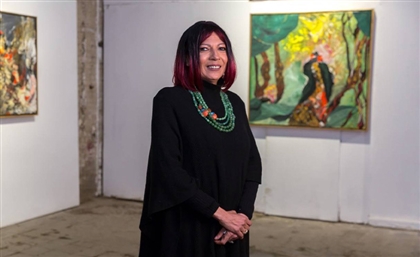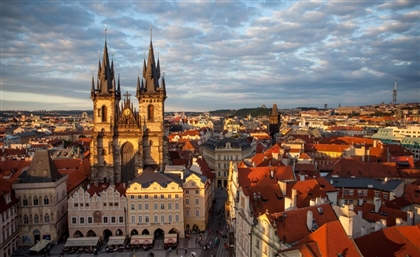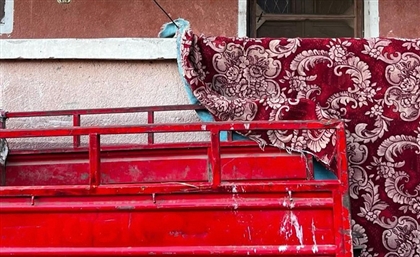This Egyptian Self-Taught Artist is Garnering International Recognition for his Surrealist Work
Hany Rashed's surrealist work has been exhibited in galleries all over Europe as well as in Egypt.
Renowned French artist, Henri Matisse, once said that "creativity takes courage", and for most artists that creativity stems from a place of vulnerability, personal struggle, and internal conflict. Channeling their inner turmoil to create a piece that resonates with an audience and moves them is a form of therapeutic release for the artist, which is also what makes art so subjective.
For Egyptian pop artist, Hany Rashed, the exhibition that garnered him international recognition and ended up being showcased in the contemporary museum of China, came to life after the death of his sister. Titled "The Last Farewell", the exhibition explored his own suffering in dealing with his sister's untimely death, and brilliantly showcased his signature use of different media to embody one of the hardest phases in his life. Showcasing his relationship with his sister, her death, and his outlook on god, the pieces are at once dark and beautiful in their honesty.
“I have a relationship with the dead. What got me started was when my sister passed away in front of me. I went into depression and I developed a psychological problem that I could only get rid of through my art,” explains Rashed. “My mother gave birth to my sister in a taxi. We had to cut off the umbilical cord in the cab, which resulted in her developing the respiratory problems that would eventually lead to her death.”
It took Rashed several years to come to terms with his sister’s death. Throughout those years, Rashed went on to to look for one challenge after the next. Once a technique is mastered, the self-taught artist researches a new one and gets started on the next piece. Using different media, from plastic and leather, to toys and photography, he weaves together tales of the human condition, as well as the battles with his own demons. Rashed has had his work featured all over Europe, as well as in prominent art galleries in Egypt.

“My favourite painting is the one I still haven’t created. I throw whatever I’ve already tried behind me and start thinking of what medium to use next. I’m constantly trying to escape routine,” says Rashed.
Recognised by many as Egypt’s pop artist, Rashed finds his inspiration in his surroundings, with man being the focal point of his art pieces. Depending on the latest trend taking the country by storm or simply the one that has been most on his mind recently, the artist will create an exhibition. His 2015 exhibition “Bulldozer”, in which the artist addresses the nature and humour of internet memes, exemplifies Rashed's talent of capturing the essence of any topic he chooses to explore.

“I don’t think that the boom in Instagram, Facebook, and social media is coincidental. They’re here so that they can have a role in everything,” elaborates Rashed. “You’ve got a camera inside your phone, you’ve got the internet. All this is there to play a role, in your house, in your art, in your life. At one point, I got really depressed so I’d spend all my time on the internet and that’s when I decided to create an exhibition that revolved around the internet.”
A master at manipulating different material to create artful pieces, Rashed deems the energy he puts into his work to be the factor that makes it stand out. In personifying truth, his truth in art, Rashed's work is both haunting and beautiful.
“It’s all about the energy you put into your work, or into anything,” says Rashed. “We can both create the same exact thing but my energy will vary from the next person and that makes all the difference.”

The Egyptian surrealist sees reality through a different lens, wherein his work expresses reality from an angle most of us often overlook. With the trend of anything bigger being better, Rashed goes against the grain where his philosophy on art is concerned.
“Most artists amplify reality, I shrink it because I think people can see it more clearly when it’s smaller, kind of like toys."
























